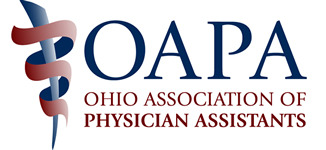Complete Story
12/27/2023
OAPA Working for You: Financial 101
There’s a common saying that “nonprofit is a tax status, not a business model,” and here at OAPA, we understand that. We value transparency and want to give members a behind the scenes look at OAPA’s financial approach. Here are the basics of OAPA’s finances to help you feel confident that we are responsibly stewarding your membership investment.
Tax Status
OAPA is a 501(c)(6) nonprofit organization. Like a 501(c)(3) charitable nonprofit, it is exempt from federal income taxes. Unlike a 501(c)(3), though, contributions to OAPA are not a tax-deductible charitable gift for the contributor. OAPA is permitted to accept contributions, however, and there are a few critical funds for those looking to support the organization beyond a dues payment. An important benefit of 501(c)(6) status is the ability to engage in substantial lobbying activities, which gives OAPA the opportunity to influence legislation that can reduce barriers to practice for PAs in Ohio.
Accounting
OAPA operates on a January 1-December 31 fiscal year. Daily and monthly accounting is managed by the Executive Director, with a certified public accounting firm providing services to complete annual tax filings. OAPA recently established a more robust accounting system, building out a more detailed chart of accounts and deploying QuickBooks Online to better track transactions and issue more professional nonprofit financial statements. These efforts will help to inform the Board of Directors as budgets are created and business decisions are made, offering more data and nuance than ever before.
Banking
OAPA has three distinct bank accounts - a checking account for general operating expenses, a money market account for savings, and a checking account specifically for the OAPA Political Action Committee. An area of focus for 2024 will be to develop a plan for building and maintaining more long-term reserves (whether in the money market fund or other financial vehicles), including considering risk tolerance and establishing policy around investments.
Budgeting
The budget is drafted in December and approved by the Board of Directors in January. It is the guidebook for making decisions and measuring progress over time. In recent years, OAPA has experienced deficit budgets, with challenges in earning conference revenue and managing general expenses. For 2024, OAPA will pursue a balanced budget and seek to grow nondues revenue, including revitalizing in-person events, to bolster OAPA’s financial future and engage member and nonmember audiences.
Funding
As a membership association, most of OAPA’s income is derived from membership dues and event registrations. Other sources include sponsorship, exhibits, and advertising, along with one-off contributions by members and supporters to a handful of funds (Legislative Fund, Scholarship Fund, etc.) Expenses include the cost of food and beverage, A/V, materials, and more at in-person events, scholarship distributions, lobbying efforts, and operating expenses such as technology, management services, accounting, and more. OAPA is subject to the same economic forces as any other business or individual, and has recently experienced the impact of inflationary pressure, competitive compensation, and market fluctuations.
Nonprofit is a Tax Status, Not a Business Model
To ensure a profitable bottom line, OAPA is improving its attention to accurate budgeting, expense mindfulness, and pricing analysis so that the organization can regain financial ground and build a more sustainable financial future. A major difference between nonprofits and for profit organizations is who or what benefits from net income. In a for profit, the owners, employees, board, and/or investors may receive such distributions, whereas in a nonprofit like OAPA, net income does not inure to the benefit of any individual.
In other words, when OAPA has more revenue than expense at the end of a year, the surplus remains in OAPA’s coffers. It can then be used to strengthen long term reserves and rainy day funds, or it can be reinvested in members through funding activities of strategic importance.
We are grateful for the investment of members, event attendees, and nonmember supporters in the PA community that help to fund OAPA’s activities. We renew our commitment to financial stewardship and responsible decision making to ensure that OAPA continues to serve Ohio PAs for many years to come.

